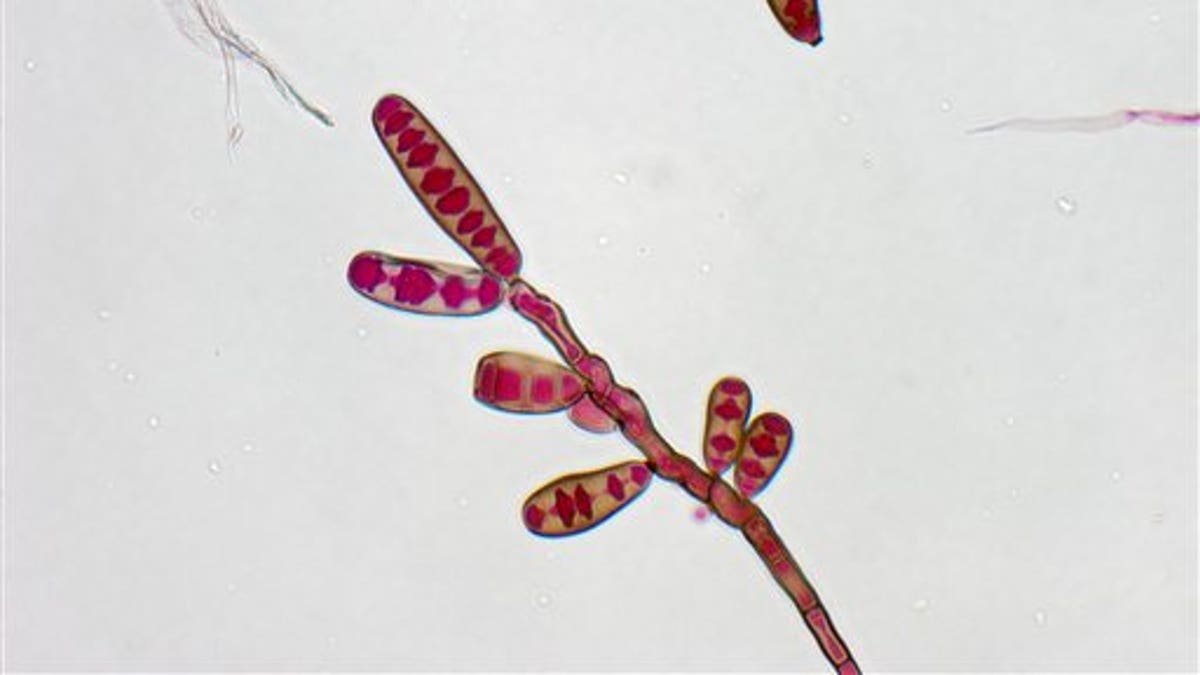
FILE - This undated file image made available by The Centers for Disease Control and Prevention shows the Exserohilum rostratum fungus. The black mold creeping into the spines of hundreds of people who got tainted shots for back pain marks uncharted medical territory. Doctors are beginning to detail in medical journals the first deaths in this outbreak, and the grim autopsy findings make clear that treating early is crucial, before the fungus becomes entrenched. (AP Photo/The Centers for Disease Control, File) (AP)
A black mold entering the spines of hundreds of people who received contaminated vaccines for back pain has marked uncharted medical territory.
This fungus, classified as being difficult to diagnose, has never seemingly caused meningitis, until now. It requires at least three months of a treatment that can cause hallucinations. Not only is it unknown when is it safe to stop treating, but there is also no good way to know how to monitor those who fear the fungus, which may be festering silently inside their bodies.
The fungus’ brown-black color signals an armor that helped the mold sneak past the immune defenses of healthy people.
“I don’t think there is a precedent for this kind of thing,” said Dr. Arjun Srinivasan of the Centers for Disease Control and Prevention (CDC). “This is definitely new territory for us.”
Health officials have tracked down most of the 14,000 people potential at risk for fungal meningitis, which has already killed 24 people and sickened more than 300.
“What we’re dealing with here is fundamentally different from a typical fungal infection,” said Dr. Arturo Casadevall, a fungal disease specialist at New York’s Albert Einstein College of Medicine. “This is a bug that most of us don’t know much about.”
People who received tainted steroid shots made by a specialty pharmacy in Massachusetts have been told to stay on guard for months to detect meningitis symptoms. According to the CDC, the biggest risk for getting sick seems to be within 42 days of receiving one of the implicated back injections.
“We know the farther out you are from receiving an injection, the lower your risk becomes for developing meningitis or other infections,” said CDC’s Dr. Tom Chiller. “We want to emphasize that.”
Fungus-caused meningitis is extremely rare, especially in healthy people. Unlike other more common bacterial and viral forms of meningitis, fungal meningitis grows very slowly and it’s hard to diagnose. The main culprit of this outbreak is a black mold commonly found in dirt and grasses.
Black mold is treatable with a drug name voriconazole, which features fewer side effects than the older treatment initially recommended when the outbreak began.
Medical experts are being asked to carefully monitor patients during treatment.
Based on reporting by the Associated Press.
Follow us on twitter.com/foxnewslatino
Like us at facebook.com/foxnewslatino
